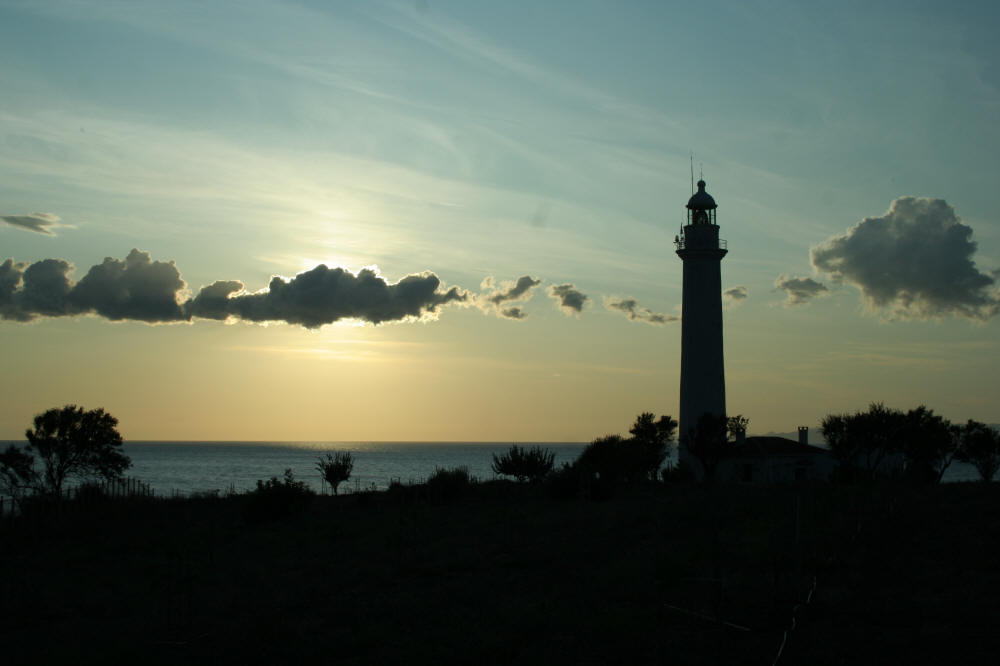|
Cape Helles British
Memorial/V Beach
Gallipoli Peninsula
20 Sept 09
Jim and I get into the Ataturk International Airport
at 0230 local time. Customs and visa-getting are painlessly
done...getting the utterly thrashed Renault rentaracer out of the
parking garage is a nightmare, and coffee of questionable vintage poured
onto the parking pass/pinball machine seems to have done the trick.
Note to self: stopping in the driveway of a heavily guarded turkey
military base in the middle of the night to study the map is probably a
bad thing....GPS coverage of any sort here would have helped
immeasurably.
Jim does the driving chores while l navigate/examine
the backs of my eyelids...much of Thrace and Marmara slide by in the
darkness, not that the drive on E 84 thru Takirdag was anything
remarkable. Think endlessly drab cityscape for about half the journey.
We arrive at Aceabat at first light, a small town of
5500 people located on the Dardanelles and the closest place to the
battlefield that we expect to find lodging and have 'Nescafe Red' and simit...sesame encrusted bread ring...at the town square.
We then head 20 km overland to the Cape Helles British Memorial, where Jim's
Great Uncle's name is inscribed, along with almost 21000 other allied
soldiers with no known grave.
We complete our tour here, head back to Aceabat for
the evening to regroup.
Landing at
Cape Helles
The landing at Cape Helles was part of the amphibious
invasion of the Gallipoli peninsula by British and French forces on
April 25, 1915
during the First World War. Helles, at the foot of the peninsula, was
the main landing area. With the support of the guns of the Royal Navy, a
British division was to advance 10 km along the peninsula on the first
day and seize the heights of Achi Baba. From there they would go on to
capture the forts that guarded the straits of the Dardanelles. Another
landing was made to the north by the Australian and New
Zealand Army Corps (ANZAC).
The Helles landing was mismanaged by the British
commander and the two main invasion beaches became bloodbaths, despite
the meagre Turkish defences, while the landings at other sites were not
exploited. Although the British managed to gain a foothold ashore, their
plans were in disarray. For the next two months they would stage a
number of costly battles in attempt to reach the objectives that they
had intended to take on the first day.
The Helles landing would be made by the British 29th
Division, a regular army division that had been formed from garrison
units that had be stationed throughout the British Empire prior to the
outbreak of the war. This also included the Newfoundland Regiment.
The landing would be made after dawn and following a
preliminary naval bombardment, starting at 5 am and lasting one hour.
Five beaches were designated for the landing. V
and W Beaches were the main landings at the very tip of the peninsula on
either side of Cape Helles itself.
V Beach
V Beach was 300 yards (270 m) long with Cape Helles
and Fort Etrugrul on the left and the old Sedd el Bahr castle on the
right, looking from the sea. The beach was defended by about 100
men from the 3rd Battalion of the 26th Regiment, equipped with four
machine guns.
The first ashore was to be the Royal Dublin Fusiliers
which landed from ships boats that were towed or rowed ashore. The rest
would be landed from the SS River Clyde, a 4,000 ton converted
collier. The ship held 2,000 men; the 1st Battalion of the Royal
Munster Fusiliers plus two companies of the 2nd Battalion.
The tows containing the Dubliners came in at 6 am.
As the boats were about to land, the Turkish defenders opened up, laying
down a withering fire. The guns in the fort and castle enfiladed the
beach, slaughtering the men in the boats. As they came down the gangways
they continued to be mown down. A few made it ashore and sought shelter
under a sand bank at the edge of the beach where they remained, pinned
down. Out of the 700 men who went in, only 300 survived, many of whom
were wounded.
The River Clyde followed closely behind the
tows. Two companies of Munsters emerged from the sally ports and tried
to reach the shore but were cut to pieces, suffering 70% casualties.
Six Victoria Crosses were awarded at V Beach, all to
sailors or men from the RND who had attempted to maintain the bridge of
lighters and recover the wounded.
Cape Helles British Memorial
At the highest point of the cape is the Helles
Memorial, a monument to those whose remains lie scattered across the
1915 battlefield. On the stone panels of its walls are the names of 20
752 British Empire servicemen who died in the Gallipoli campaign and who
have no known grave.
click on a picture to see a larger
image. hit arrows at either end of the slideshow for more pictures.
Cape Helles British Memorial Jim points to Morris E. A.....his Great Uncle killed on 25 Aug 1915 and has no known grave. Ft Etrugrul overlooking V Beach - town of Seddulbahir with the Sedd-el-Bahr fort behind it. V Beach CWGC Cemetery in middleground. Dardenelles behind. Model of V beach with fort in the background. Turkish trenches of Ft Etrugrul behind the model and overlooking V beach. Enroute to V Beach from Helles Memorial/Ft Etrugrul. V Beach Cemetery....Ft Etrugrul on high grounds behind the cemetery. Sunset from V Beach CGWC Cemetery Heading into town and the Sedd-el-Bahr fort. out of focus...sorry! A nice shot of the fort with Jim in repose...if the shot had come out:(

• Up • CWGC Cemeteries • Sidmouth • Gallipoli Natl Park • Helles Point/V Beach • Paracentrum • |